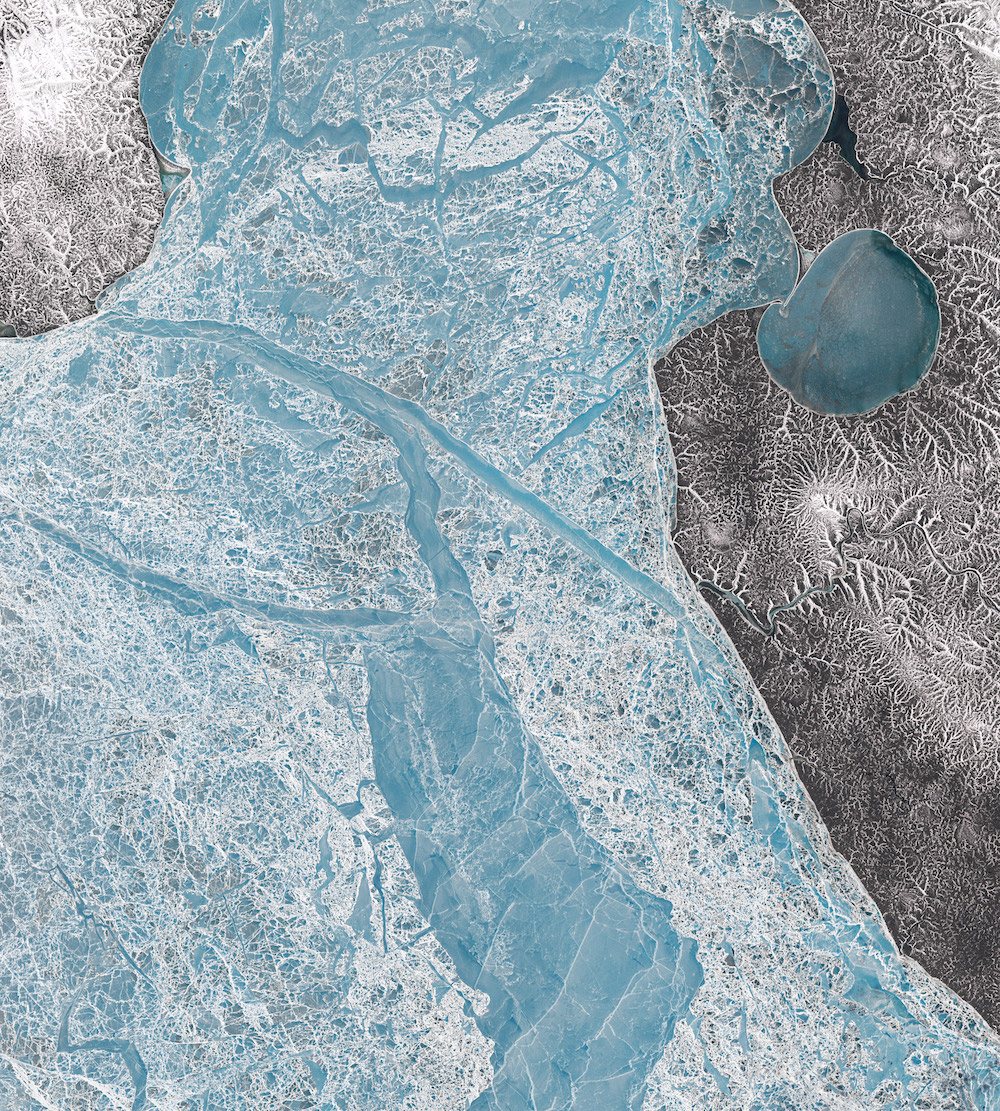This Frozen Russian Island Is the World's Biggest Jigsaw Puzzle

Chilling between the Arctic Ocean and Siberia's frigid northern seas, the cluster of rocks known as the New Siberian Islands is so cold and remote that they were once believed to be made entirely of woolly mammoth bones. (They're not, but there are still plenty of mammoth fossils to be found.)
Viewed on foot, the islands are a near-uninhabited canvas of tundra covered in snow roughly three-quarters of the year. But seen from the sky, as in an epic satellite image posted by NASA Earth Observatory on Dec. 1, the bleak islands look entirely different. [The Frozen North: Stunning Images of Russia From Above]
In a photo snapped by the Landsat 8 satellite in June 2016, the Anzhu Islands (a subset of the New Siberian Islands) meet the sea in a giant jigsaw puzzle of cracking ice. According to NASA, it's not unusual for ice to cling to these frosty islands year-round, though "the appearance of this ice can change on a daily basis, altered by currents, winds, and seasonal cycles of freezing and melting."
When above-freezing summertime temperatures briefly free the islands from their regular snow cover, gorgeous ice mosaics like this one emerge for anyone quick enough (and airborne enough) to see them. A few weeks earlier, NASA wrote, and this same landscape would be completely white. A few months later, and the snow would return again for another long, Arctic winter.
Landsat 8 was launched in 2013 in a collaboration between NASA and the U.S. Geological Survey. According to NASA, the satellite images the entire Earth every 16 days.
- 50 Interesting Facts About Planet Earth
- Earth from Above: 101 Stunning Images from Orbit
- Images of Melt: Earth's Vanishing Ice
Originally published on Live Science.
Sign up for the Live Science daily newsletter now
Get the world’s most fascinating discoveries delivered straight to your inbox.

Brandon is the space/physics editor at Live Science. His writing has appeared in The Washington Post, Reader's Digest, CBS.com, the Richard Dawkins Foundation website and other outlets. He holds a bachelor's degree in creative writing from the University of Arizona, with minors in journalism and media arts. He enjoys writing most about space, geoscience and the mysteries of the universe.









